 |
 |
 |
| |
Reduced Bone Mineral Density Derived from Dual X-ray Absorptiometry (DEXA)
Assessments in Patients with Chronic Hepatitis B (CHB)
|
| |
| |
Reported by Jules Levn EASL Berlin Germany March 30-Apr 2
Scott Fung1, Milotka Fabri2, Florence Wong1, Jenny Heathcoate1, Selim Gurel3, Wing C Peter Kwan4, Florin A. Caruntu5, Peter Husa6, Wodzimierz Mazur7, Mijomir Pelemis8, Edward Gane9, Derek Coombs10, Sunila Reddy10, Anyang Feng10 and Kenneth R. Hirsch10
1Toronto General Hospital,University Health Network, Toronto, ONT Canada; 2Clinical Centre Vojvodina, Clinic of Infectious Diseases, Novi Sad, Serbia; Clinical Centre of Serbia, 3Uludag University Medical Faculty Hospital, Bursa Turkey; 4Hepatitis Program, Vancouver Hospital, Vancovuer BC;
6Faculty Hospital Brno and Faculty of Medicine, Masaryk University Brno, Brno, Czech Republic 7Clinical Department of Infectious Diseases Silesian Medical School, Chorzˇw, Poland 5Prof. Dr. Matei Bals Institute for Infectious Diseases, Bucharest Romania;
8Clinic for Infectious and Tropical Diseases, Belgrade, Serbia; 9Auckland City Hospital, Auckland New Zealand, 10Gilead Sciences Inc, Foster City, CA.
Author Summary
· Higher prevalence of reduced BMD was observed in our study population prior to study entry based on DEXA scans compared to reported medical history
· Duration of chronic HBV infection and HBeAg status could contribute to high prevalence of reduced BMD; However, treatment duration (LAM, ADV) appears to not contribute to reduced BMD
· In our study, baseline median Z and T- scores suggest that males and Asians have greater reductions in BMD compared to females and non-Asians
- Limitations: single DEXA timepoint and number of subjects in sub-population categories were small
Author Conclusions
· Our data demonstrate a higher prevalence of baseline bone disease among patients with chronic HBV.
· Duration of chronic HBV but not duration of treatment
appears to impact BMD
· Additional studies to further characterize bone disease in
chronic HBV population are warranted
INTRODUCTION
· Lamivudine (LAM) is used extensively worldwide for the treatment of chronic HBV but is associated with a high rate of resistance, approaching 70% after 4 years of therapy1
- Chronic HBV treatment guidelines recommend adding tenofovir disoproxil fumarate (TDF) or switching to TDF/emtricitabine (FTC) in the setting of confirmed LAM-resistance1,2
· Study GS-US-174-0121 compares the safety and effi cacy of TDF to TDF/FTC in chronic HBV subjects currently receiving LAM monotherapy with LAM- associated resistance mutations
· Metabolic bone disease is a known complication of chronic liver disease
- Little data are available specifi c to patients with chronic hepatitis B
· Objective of the current analysis is to assess the prevalence of bone disease at baseline (prior to treatment initiation) in Study GS-US-174-0121 based on DEXA scans


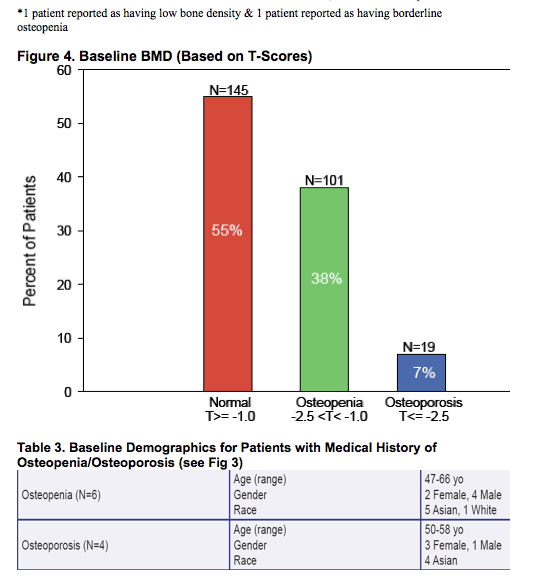
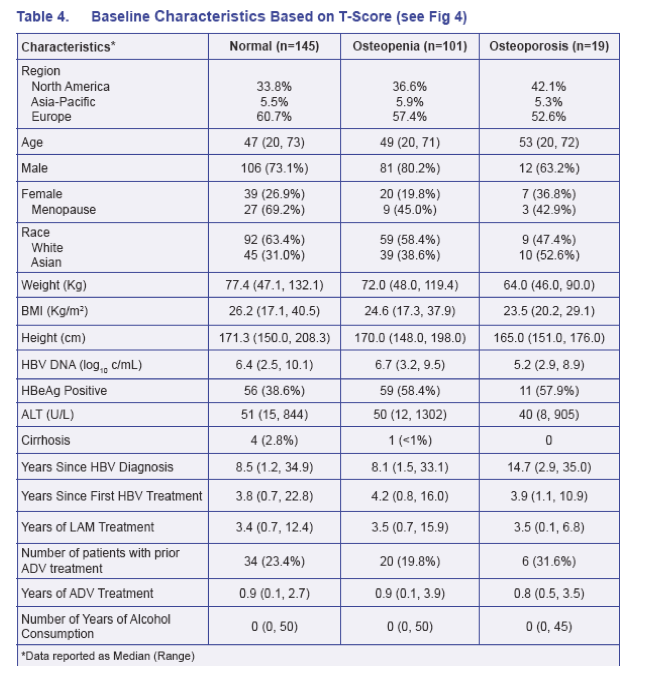
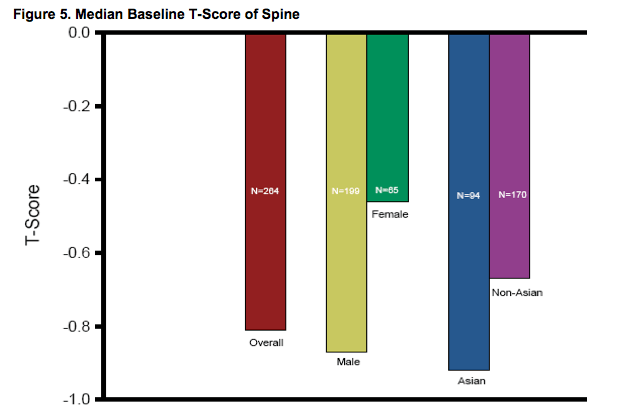
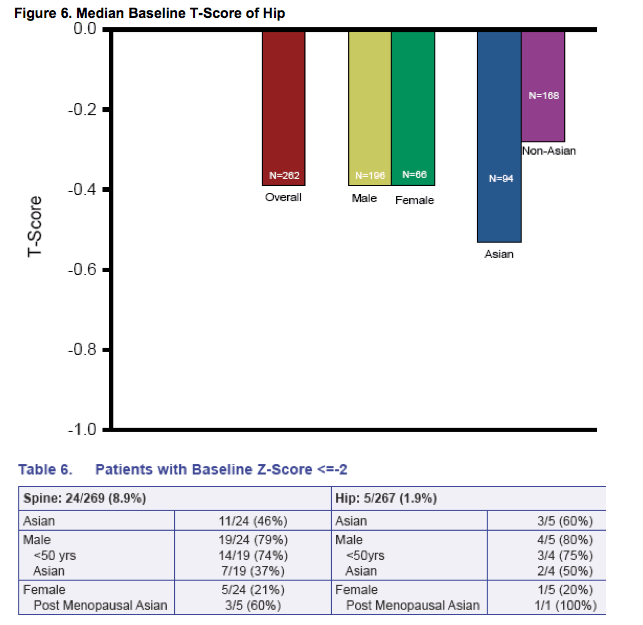
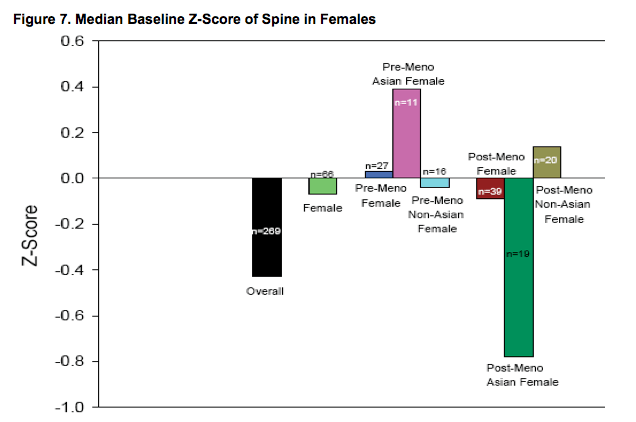
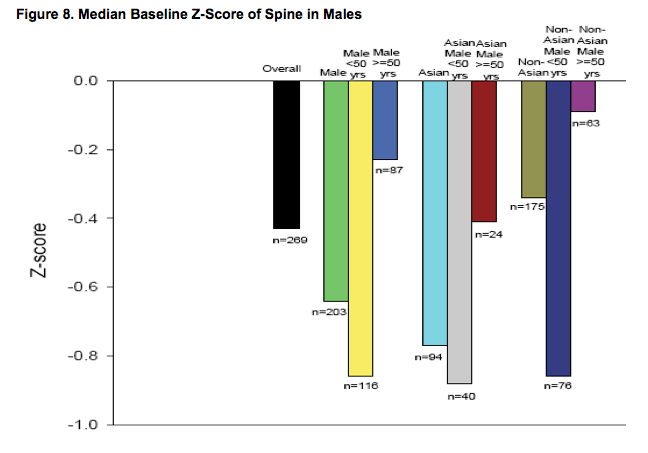
References
1. http://www.easl.eu/assets/application/fi les/b73c0da3c52fa1d_fi le.pdf
2. http://www.aasld.org/practiceguidelines/documents/bookmarked%20practice%20guidelines/chronic_hep_b_update_2009%208_24_2009.pdf
3. Blake GM, Fogelman I. The clinical role of dual energy X-ray absorptiometry. Eur J Radiol. 2009;71(3):406-14
4. http://www.iscd.org/
|
| |
|
 |
 |
|
|